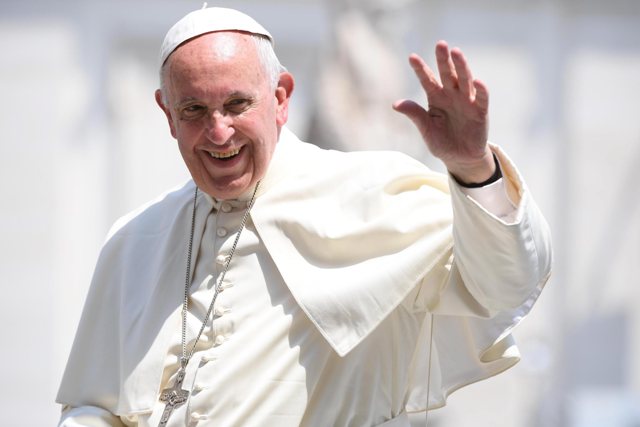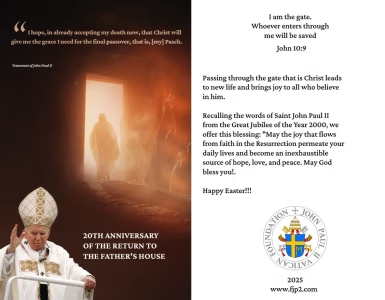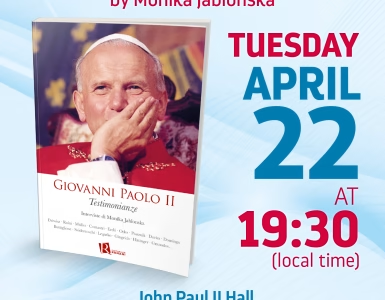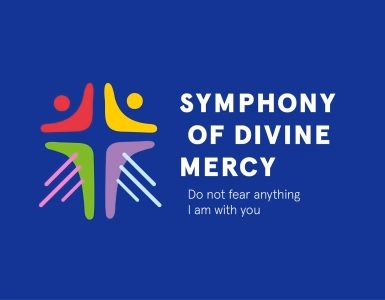John Paul II was a great witness of faith, a great man of prayer, a confident guide of the Church in times of great changes – wrote Pope Francis in the foreword to the book “100 years. Words and paintings” – dedicated to the Pope-Pole on the 100th anniversary (May 18, 2020) of the birth of Karol Wojtyła. It was published by the Vatican Publishing House, in cooperation with the St. Stanislaus Publishing House and the American “Paulist Press” Publishing house. The book was published under the auspices of the Polish Embassy at the Holy See and the Polish Institute in Rome. Giuseppe Merola selected texts of the homily, speeches, the teaching of John Paul II and suggestive images of the Vatican media chose Mirosław Lesner.
In the introduction, Pope Francis emphasized John Paul II’s great love of man, the testimony of the Gospel, as well as the suffering which he experienced already in his youth and by which he lived, entrusting himself completely to the Lord God. This shaped and strengthened his Christian faith, in which he was raised in the family. He was “an extraordinary educator of many young people who, through him, a young priest, were put on the path of a solid faith lived at every moment of their lives” – emphasized the present Successor of St. Peter. Pope Francis hopes that the album will go into the hands of many people, especially young people. He recalls that Saint John Paul II throughout his life taught us to walk “with joy, despite the difficulties, on the roads of the world, following the footsteps of the giants who have walked before us in the belief that we are not and will never be alone.” He did so “always cultivating a special bond with our Mother in Heaven, Mary, Mother of tenderness and mercy” – wrote the Pope from Argentine.
Pope Francis presented St. John Paul II as “a great witness of faith, a great man of prayer, a confident guide of the Church in times of great changes.” He recalled his encyclical letters, as well as the extremely valuable gift of the Catechism of the Catholic Church. He emphasized his great love to a man, openness, his strive for a dialogue with all, the determination in efforts to stop wars, the desire to meet everyone and accept those who suffer. He recalled that along with the first Bishop of Rome from Eastern Europe, the Church of martyrs from behind the Iron Curtain received a voice.
However, Pope Francis, first of all, wants to remind readers how much Saint John Paul II suffered in his life. “In addition to personal suffering, it was also the suffering of his people and his homeland, Poland,” he points out. He adds that Karol Wojtyła suffered both as a young man and while serving at the Peter’s Capital when his life was in danger on May 13, 1981; he shed his blood for the Church, and testified to us that “even in a difficult period of illness, which is daily shared with God, Who became man and was crucified for our salvation, we can remain joyful, we can remain ourselves. One can rejoice in the certainty of meeting the resurrected Jesus.”
Saint John Paul II was “a great witness of Divine Mercy” and it is beautiful to “remember him in a simple way”, fifteen years after his death. It is a long time for many young people who did not know him or have only vague childhood memories about him,” and to whom this book is especially directed.





